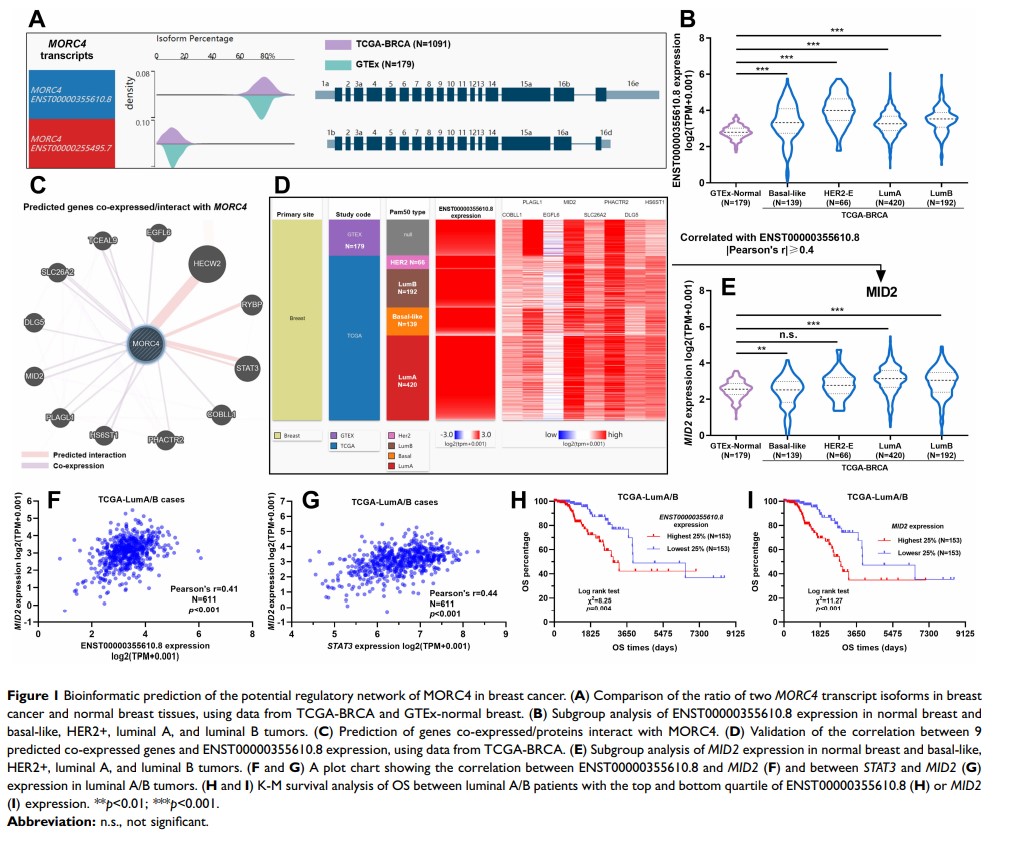9 0 5 7 8
论文已发表
注册即可获取德孚的最新动态
IF 收录期刊
- 2.6 Breast Cancer (Dove Med Press)
- 3.9 Clin Epidemiol
- 3.3 Cancer Manag Res
- 3.9 Infect Drug Resist
- 3.6 Clin Interv Aging
- 4.8 Drug Des Dev Ther
- 2.8 Int J Chronic Obstr
- 8.0 Int J Nanomed
- 2.3 Int J Women's Health
- 3.2 Neuropsych Dis Treat
- 4.0 OncoTargets Ther
- 2.2 Patient Prefer Adher
- 2.8 Ther Clin Risk Manag
- 2.7 J Pain Res
- 3.3 Diabet Metab Synd Ob
- 4.3 Psychol Res Behav Ma
- 3.4 Nat Sci Sleep
- 1.9 Pharmgenomics Pers Med
- 3.5 Risk Manag Healthc Policy
- 4.5 J Inflamm Res
- 2.3 Int J Gen Med
- 4.1 J Hepatocell Carcinoma
- 3.2 J Asthma Allergy
- 2.3 Clin Cosmet Investig Dermatol
- 3.3 J Multidiscip Healthc

MORC4 通过 STAT3 介导的 MID2 上调促进 Luminal A 型/B 型乳腺癌细胞的化学耐药性
Authors Luo J, Zeng S, Tian C
Received 29 April 2020
Accepted for publication 1 July 2020
Published 12 July 2020 Volume 2020:13 Pages 6795—6803
DOI https://doi.org/10.2147/OTT.S260509
Checked for plagiarism Yes
Review by Single-blind
Peer reviewer comments 2
Editor who approved publication: Dr Arseniy Yuzhalin
Purpose: MORC4 has recently been characterized as a breast cancer-associated anti-apoptotic oncoprotein. In the current study, we explored its downstream regulation in luminal A/B breast tumors.
Materials and Methods: Bioinformatic prediction was performed using data from The Cancer Genome Atlas (TCGA)-breast cancer (BRCA). Cellular and molecular studies were conducted using luminal A/B representative MCF-7 and BT-474 cell lines.
Results: ENST00000355610.8 (encoding MORC4a isoform) was the dominant transcript in breast cancer. ChIP-qPCR and dual-luciferase assay confirmed two STAT3-binding sites in the MID2 promoter in both MCF-7 and BT-474 cells. Co-IP confirmed an interaction between MORC4 and STAT3. ChIP-qPCR data indicated that MORC4 inhibition led to remarkably decreased enrichment of the STAT3-binding MID2 promoter segments. MORC4 overexpression significantly elevated BCL-2 expression in MCF-7 cells and increased their resistance to adriamycin (ADM), 5-fluorouracil (5-FU), and cisplatin (DDP). MID2 inhibition largely abrogated MORC4-induced drug-resistance. However, the drug-resistant phenotype was rescued by overexpressing MID2-MT that was resistant to MID2 siRNA.
Conclusion: This study revealed a novel regulatory mechanism of MORC4 on MID2 expression via STAT3-mediated transcriptional activation. This regulatory axis might confer increased chemoresistance to breast cancer cells.
Keywords: MORC4, STAT3, MID2, chemoresistance, luminal A/B breast cancer
